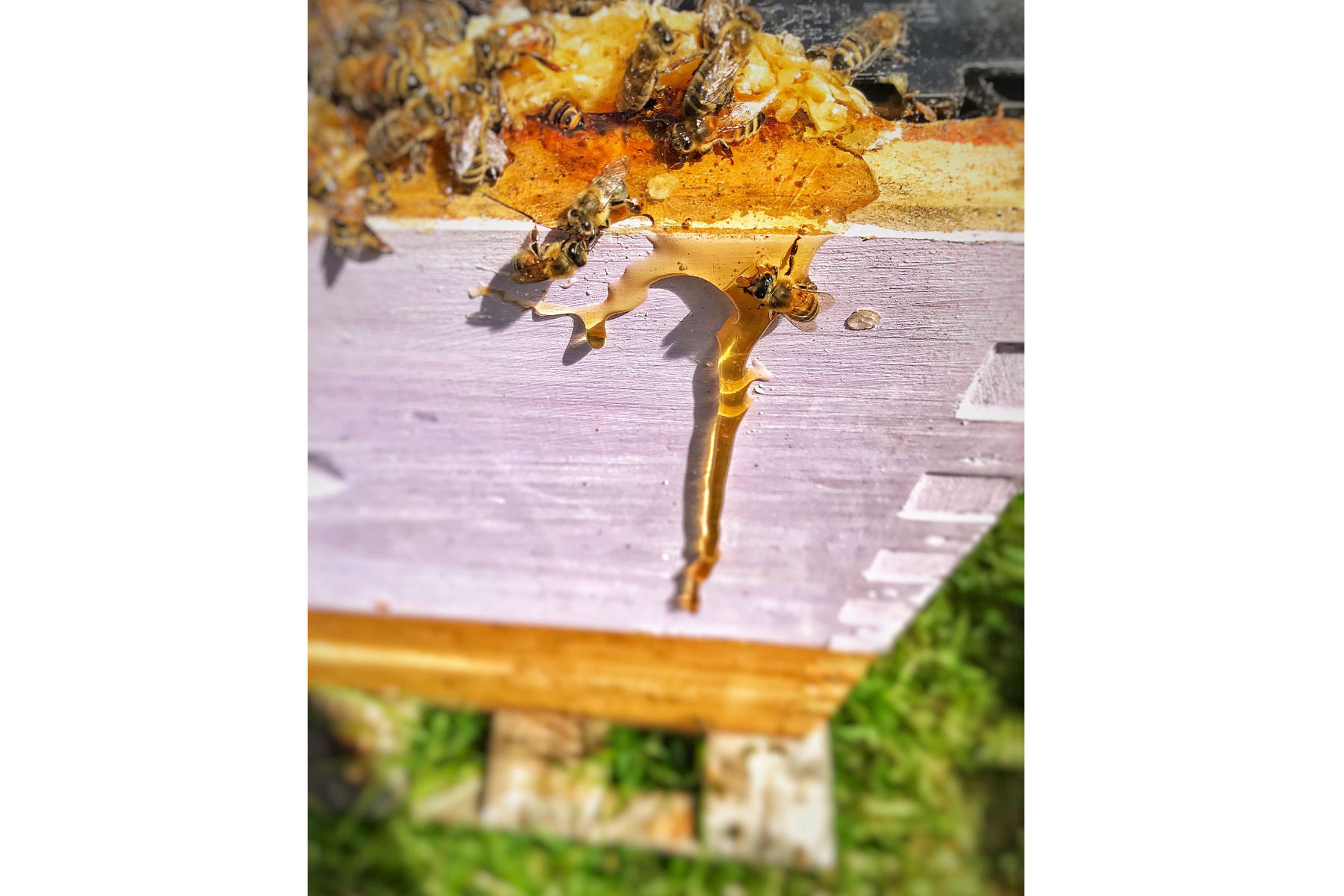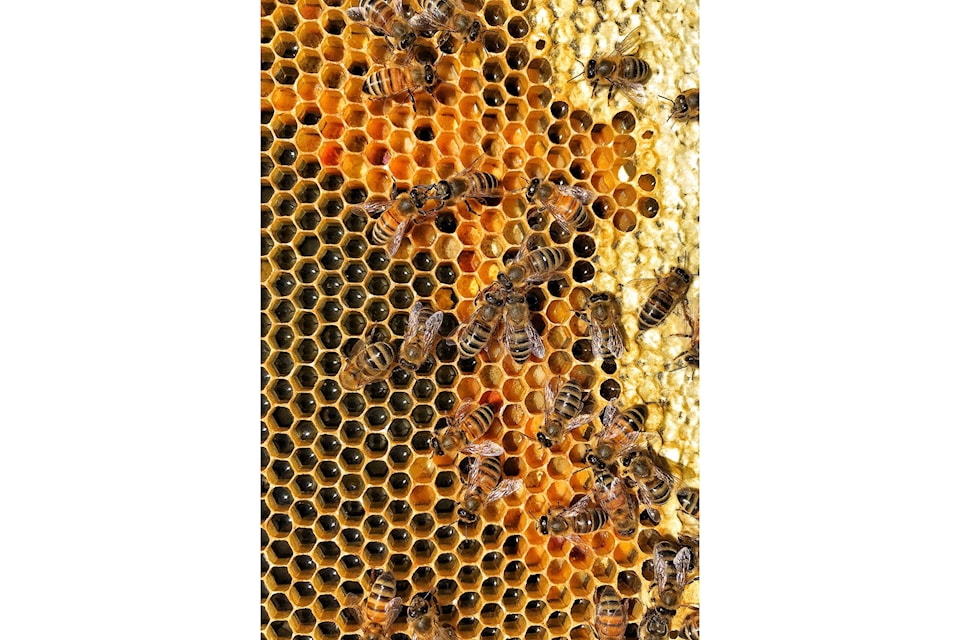Our first nectar flow has come and as we near its end, the bees are left with a sweet reward- honey.
But how is honey produced and how can we help with honey production?
Honey is the product of nectar. When you see honeybees crawling in your foxglove or swimming about in that California poppy, they are in search of two ingredients: pollen and nectar. Honeybees collects nectar via a straw-like tongue called the proboscis and store it in their ‘second stomach,’ the honey stomach. Full and flying heavy, the bees will head back to the hive where they discard the pollen into the honeycomb and regurgitate the nectar directly into the honey stomach of another bee. Each time, as the nectar enters a new honey stomach, enzymes are added to the mix to breakdown nectars’ complex sugar structure. This transfer from bee to bee continues until breakdown is complete.
Once deposited into the honeycomb, the bees rapidly beat their wings, fanning the nectar in pursuit of evaporating excess water. The bees reduce the moisture level to less than 18 per cent, a far stretch from the approximate 70 per cent water content found in the original nectar collected. Once satisfied, the bees will cap the honey with a thin wax coating and save it for a rainy day. This process is quite laborious but produces a product that has an incredibly long shelf life. With its low water levels and high sugar content, honey creates the ideal environment to deter bacterial and fungal growth.
Many of us love to consume honey. It is a wonderful and natural alternative to processed sweeteners. But how can we return the favour of creating such a sweet treat? Well, you do not need to be a beekeeper to help with honey production. All you need to do is plant bee food. By providing flowers, we increase the food sources available for several bee species. It is a good idea to research the bloom periods of the plants you add to your garden. By staggering bloom times in your garden you create something called continuous bloom. This continuous bloom provides a stable food source throughout the spring and summer months which is crucial for our bee populations.
Happy honey tasting!
Rachel Halliwell is a Bee Master Certified beekeeper in the Comox Valley. Her website is www.homegrownbee.ca




